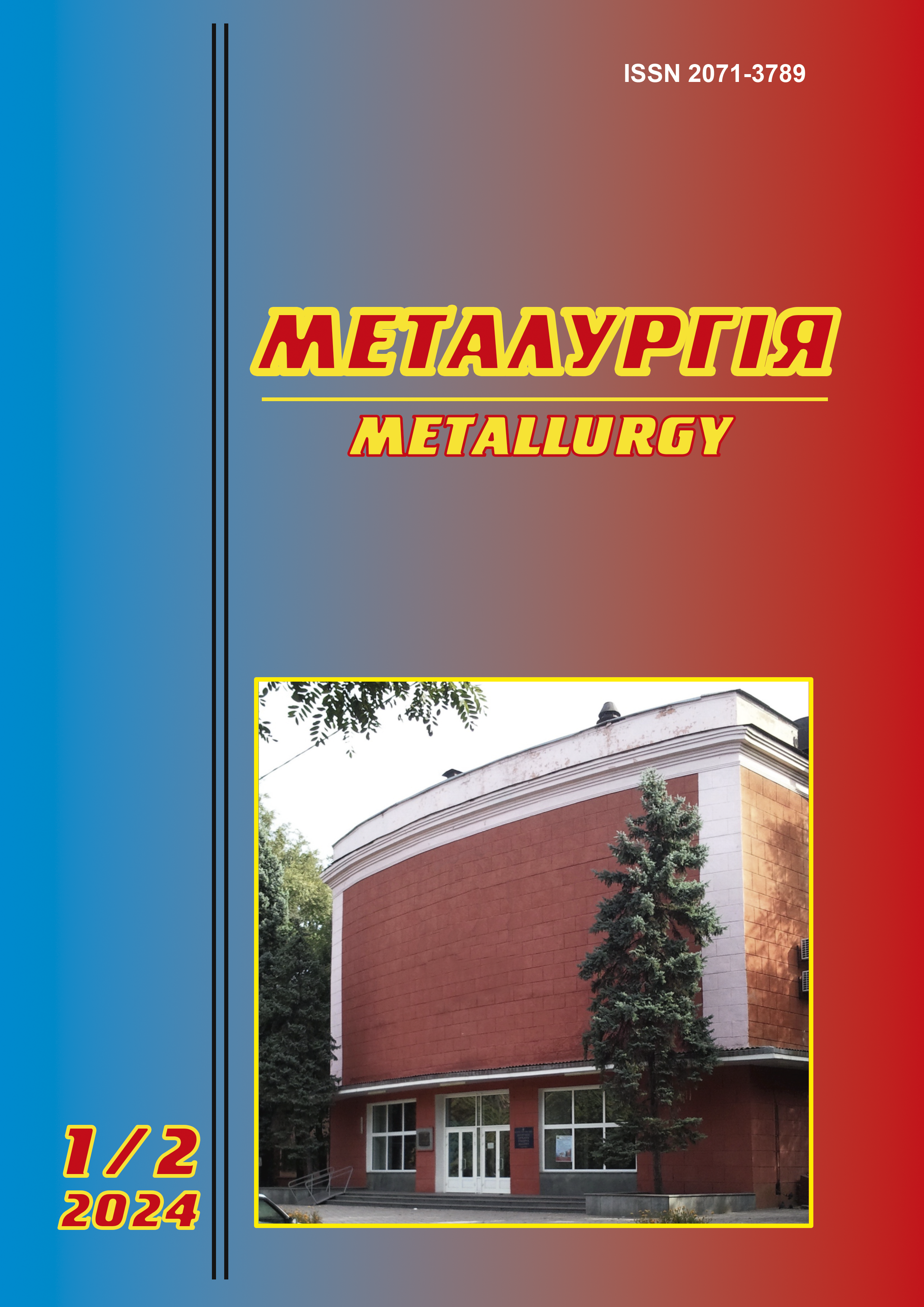INFLUENCE OF COMPONENTS OF LIGATURES ON THE FUNCTIONAL CHARACTERISTICS OF CALCIUM BABIES
Abstract
The work is devoted to the processes of creating a high-quality babbitt layer of bearings due to the use of a large amount of primary babbitt in the charge. The formation of a large amount of waste in the production of bronze-babbitt liners reduces technical and economic indicators, worsens the environmental situation at the enterprise and in the region. In this regard, it is necessary to create a technology that uses a larger amount of calcium babbitt waste. Bronze Babbitt liners are the most common design of crankshaft bearings of diesel locomotives. The traditional production technology of bronze-babbitt liners of sliding bearings involves casting an alloy based on calcium babbitt into the bronze frame. Usually, pouring is carried out centrifugally, and the charge is melted in the crucible of an electric furnace. The main task of the research is aimed at a comprehensive study of the functional properties of calcium babbitts and the assessment of the influence of each babbitt component on the quantitative characteristics of quality indicators, including the processes of aging, wear, formation of hardness, mechanical strength and structural defects. The main operational characteristics of bronze-babbitt liners of sliding bearings (hardness, impact toughness, tensile strength, wear intensity) depend on a whole set of structural parameters, technological features of production and chemical composition. At the same time, the influence of each individual factor is significantly non-linear. The study of the hardness of babbitt samples after aging up to one year made it possible to establish that the addition of magnesium helps to increase this characteristic. Thus, due to the addition of magnesium, after 80 days of exposure, the hardness of the samples increases by 1.5 times, reaching HB=25. Mathematical processing of the obtained data established that the influence of alloying elements and duration of exposure on the hardness of babbitt is estimated by a regression equation in the form of cubic splines.Based on the results of a comprehensive study of the influence of chemical elements on the mechanical characteristics of BK2 babbitt, an approximation by quadratic splines for each alloying element was constructed using the regression analysis method.
References
2. Буше Н.А. Подшипниковые сплавы для подвижного состава Москва : Транспорт, 1967. 222 с.
3. Буше Н.А. Цветные металлы и сплавы для железнодорожного транспорта. Труды ВНИИЖТ. Транспжелдориздат, 1969. Вып. 277. С. 7-12.
4. Seitz F. L’Etal solide, Jugt Jntern Phys Solvay R. Stoops, 1952. Р. 401.
5. Захарова М.И. Атомно-кристаллическая структура и свойства металлов и сплавов. Москва : Наука, 1972. 216 с.
6. Буше Н.А. Замена высокооловянных баббитов сплавом на свинцовой основе для заливки тонкостенных подшипников. Экономия и заливка цветных металлов, 1953. С.18-24.
7. Бочвар А.М. Металловедение. Масква : Металлургиздат, 1956. 495 с.
8. Зайцев А.К. Основы учения о трении, износе и смазке машин. Москав : Машгиз, 1948. 280 с.
9. Славинский М.П. Физико-химические свойства элементов. Москва : Металлургиздат, 1952. 763 с.
10. Вайнер К. Термодинамика сплавов. Москва : Металлургиздат, 1957. 179 с.
11. ДСТУ 1209-90. Баббиты кальциевые в чушках. Технические условия.
12. Буше Н.А. Антифрикционные сплавы для подшипников скольжения. Вестник машиностроения, 1981, № 12. С. 7 – 10.
13. Буше Н.А. Исследование антифрикционных сплавов подшипников подвижного состава. Труды ВНИИ железнодорожного транспорта, 1956. Трансжелдориздат. Вып. 112. С. 2-13.
14. Вол А.Е., Коган И.К. Строение и свойства двойных металлургических систем. Москва : Наука, 1979. Т.4. 578 с.
15. Беленький А.Ф., Буше Н.А. Работа подшипников коленчатого вала при обводнении дизельного масла. Труды ЦНИИ МПС. Транспорт, 1968. Вып. 359. С. 146 – 151.
16. Яцыно А.Т., Цуркан И.Г. Некоторые результаты оценки характера режима трения вагонных подшипников скольжения. Труды ЦНИИ МПС, Способы улучшения смазок железнодорожного транспорта, 1970. Транспорт. Вып. 400. С. 136-141.
17. Захаров С.М., Загорянский Ю.А. Влияние разрушений антифрикционного слоя на гидродинамические характеристики подшипников дизеля. Труды ЦНИИ МПС, 1972. Транспорт. Вып. 473. С. 15 – 17.
18. Захаров С.М., Загорянский Ю.А. Эффективность применения безканавочных вкладышей подшипников на дизелях типа. Вестник ЦНИИ МПС, 1967. № 4. С. 38.
19. Рудницкий Н.М. Выносливость материалов для подшипников скольжения автомобильных двигателей. Москва : Машгиз, 1955. 56 с.
20. Тяпкин Ю.Д., Гаврилов А.В. Старение сплавов. Итоги науки и техники. Металловедение и термическая обработка металлов, 1974. Т.8. С. 64.
21. Schneider A. Darstellung und Erklärungsansätze des Investitionsverhaltens industrieller Unternehmern., Erlangen – Nürberg, 1976. Р.200.
22. Иванова В.С., Гуревич С.Е., Коньев И.М. Усталость и хрупкость металлических материалов. Наука, 1968. 215 с.
23. Фільченков О.С., Грицай В.П., Скачков В.О., Іванов В.І. Моделювання процессу зношення підшипників ковзання на основі бабіту. Вісник ЧДТУ, 2008. № 3. С.152.

 ISSN
ISSN 


